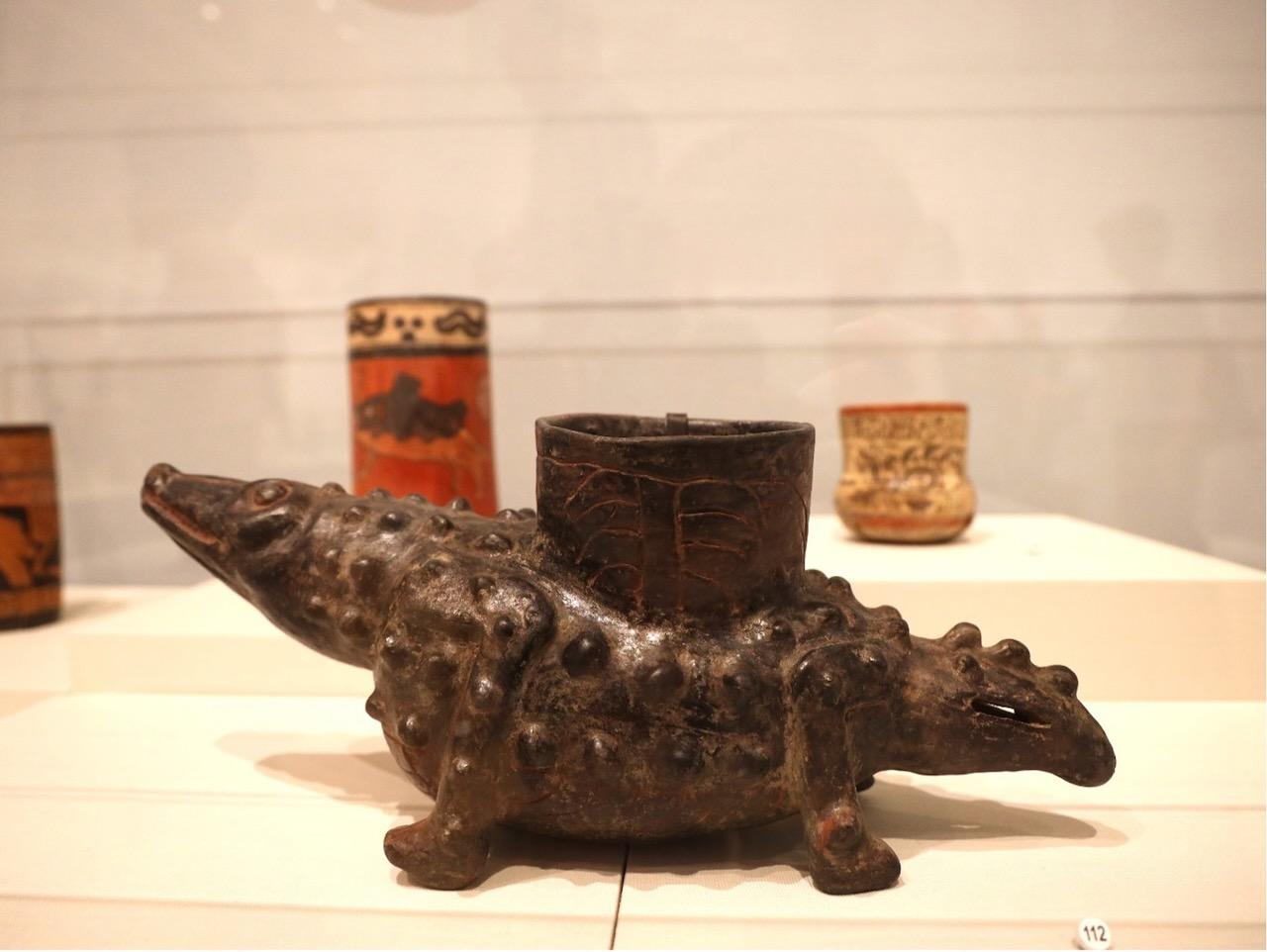For the first time in more than a decade, a Maya art exhibit comes to UT, long one of world’s premier hubs for Mesoamerican studies.
While technologies have advanced rapidly, archaeological digs remain as laborious today as they were a century ago. New tools have accelerated the pace at which one might be able to find what lies beneath the ground, but they haven’t eliminated the need for getting down on your hands and knees and delicately assessing what might be there.
And so it might be days, weeks, or even months of digging before archaeologists find relatively insignificant objects of interest. Persevere long enough, however, and the probability of finding something more interesting increases.
There can be no better feeling when this happens. Moments before you’re about to quit and become an accountant, you notice an exquisite ceramic figurine of an ancient Maya man. You wipe some mud away, peer closer, and squint. The figure appears to be, well, embarking on a transcendental experience by administering liquids where, let’s say, the sun gods don’t shine. The man leans on his elbow in a sort of twisted child’s pose, with one hand launching the “trip” and an expression that can only be described as euphoric.
While it isn’t clear how the aforementioned figurine was excavated, we do know it was found alongside many other buried objects, perhaps in a cache of offerings within a tomb. But the discovery of it — somewhere in Guatemala, sometime in the mid-20th century — must have been quite the experience, just as it is now, when visitors encounter it in a vitrine at the Blanton Museum of Art. The piece — aptly titled Figurine of a Man Performing an Enema Ritual (600 – 900 CE) — is one of 200 Mesoamerican artifacts that make up the Blanton’s “Forces of Nature: Ancient Maya Art” exhibit, which is on loan from the Los Angeles County Museum of Art (LACMA) through Jan. 7.
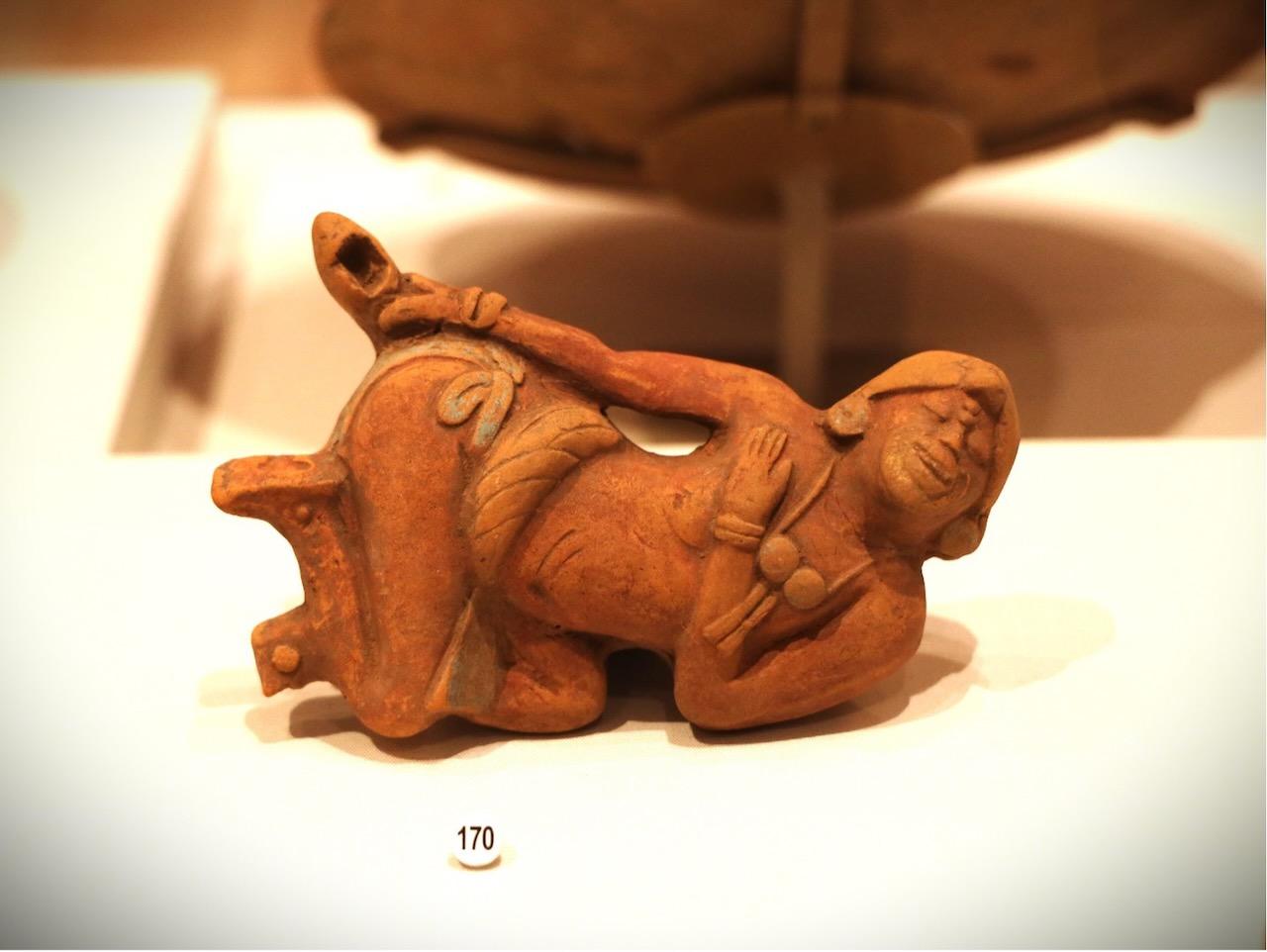
Supernatural Selections
The exhibition is the first major exhibition of Maya art presented in Austin in more than a decade. “‘Forces of Nature’ is an incredible opportunity for many in Central Texas to see ancient Maya artworks in person for the first time,” said Blanton director Simone Wicha. “The exhibition makes these fascinating objects accessible to the public while also providing a wealth of learning and teaching opportunities for educators and students across the region, especially here at UT Austin, home to one of the most highly regarded Ancient Maya studies programs in the world.”
The show delves into the supernatural aspects of Maya art, bringing together vessels, figurines, jewelry, and other artifacts from parts of what are now Guatemala, Mexico, and Belize. These artifacts not only illustrate the artists’ portrayals of the supernatural but also shed light on how Maya royalty acquired and showcased their own mystical powers. The exhibit, unveiled in August, is a testament to the enduring allure of the Maya civilization, which, thanks partly to its enigmatic hieroglyphic writing system, has long been a subject of fascination and scholarly inquiry.
Rosario I. Granados, Marilynn Thoma Curator, Art of the Spanish Americas, who managed the installation of the show at the Blanton, emphasizes the enduring relevance of the Maya worldview. “Although these objects are more than a thousand years old, the Maya understanding of nature as both a source of nourishment and danger will resonate with audiences today, especially with recent headlines about extreme weather events and an increasing appreciation for our environment,” she said. “There’s lots to learn and discover from these ancient artworks, which have such a strong connection to contemporary Maya culture today.”
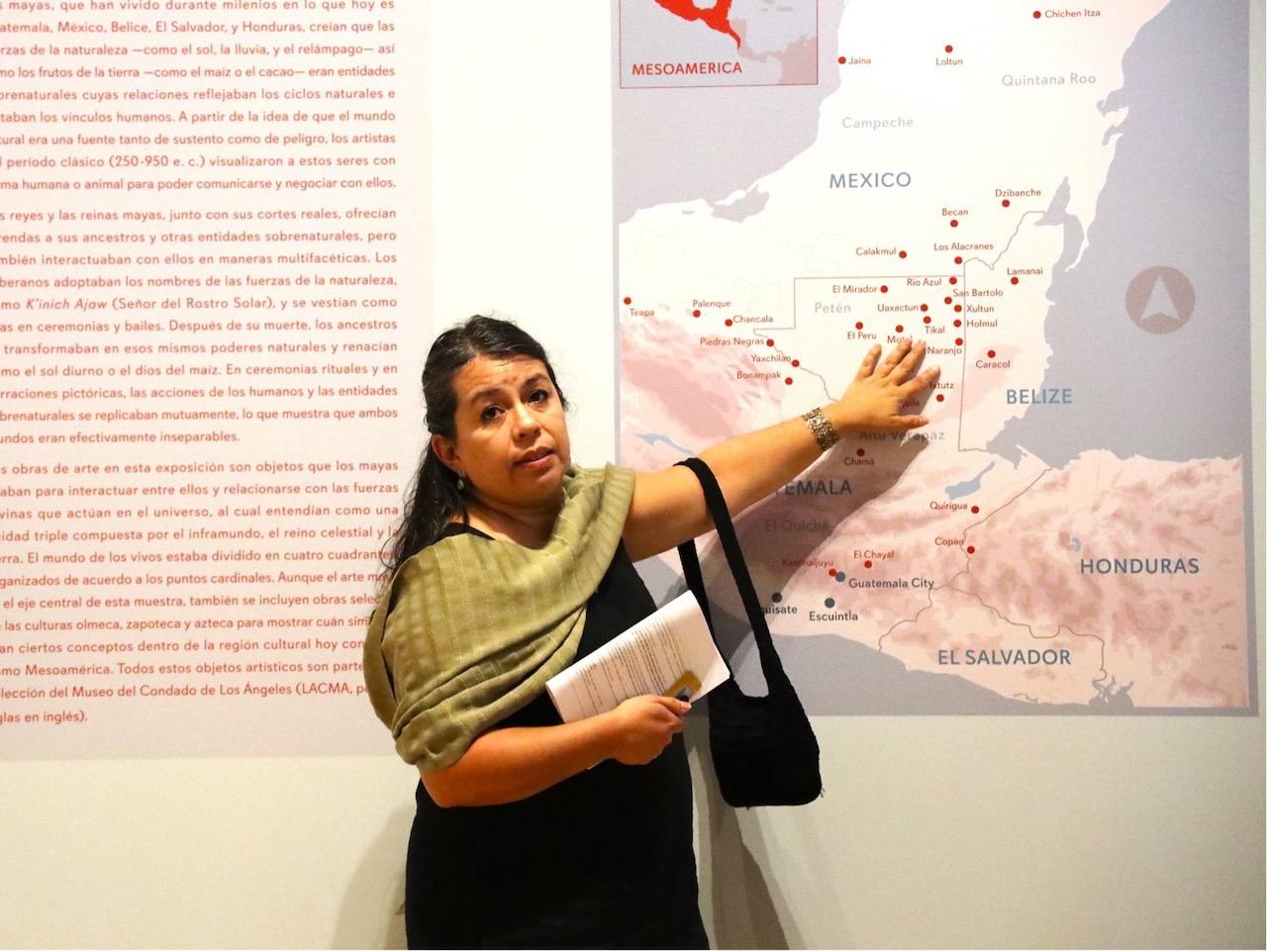
The exhibition curator, Megan E. O’Neil — formerly an assistant curator at LACMA and now an assistant professor of art history at Emory University and faculty curator of the art of the Americas — is herself a Texas Ex, having earned her master’s in art history at UT Austin.
A “Force of Nature” in the Field
“Forces of Nature” not only marks a significant cultural event for Austin; it also underscores UT’s position as a global leader in Mesoamerican studies. The University’s rise in the field began when scholar and teacher Linda Schele brought her legendary dynamism and charisma to campus in the late 1970s, resulting in a sort of cult following. One of Schele’s younger colleagues was David Stuart, who, beginning in the 1980s, led the way in deciphering Maya hieroglyphics; he is now the Linda and David Schele Chair in the Art and Writing of Mesoamerica, a position established in honor of his mentor.
UT Austin has long been a hub for Mesoamerican studies, with elite faculty from multiple departments in the College of Liberal Arts. For example, the Programme for Belize Archaeological Project (PfBAP)— directed by anthropology professor Fred Valdez, as part of the Texas Archeological Research Laboratory’s (TARL) Center for Archaeological and Tropical Studies (CATS) — has been conducting original research on Maya sites in northwestern Belize for more than 30 years.
It was Stuart’s arrival to UT in 2004, however, that cemented UT’s elite status in the field. He expanded what became the Mesoamerica Center, which in turn oversees the Mesoamerica Meetings, a premier academic conference and symposium founded by Schele, and Casa Herrera, a research and teaching facility based in Antigua, Guatemala.
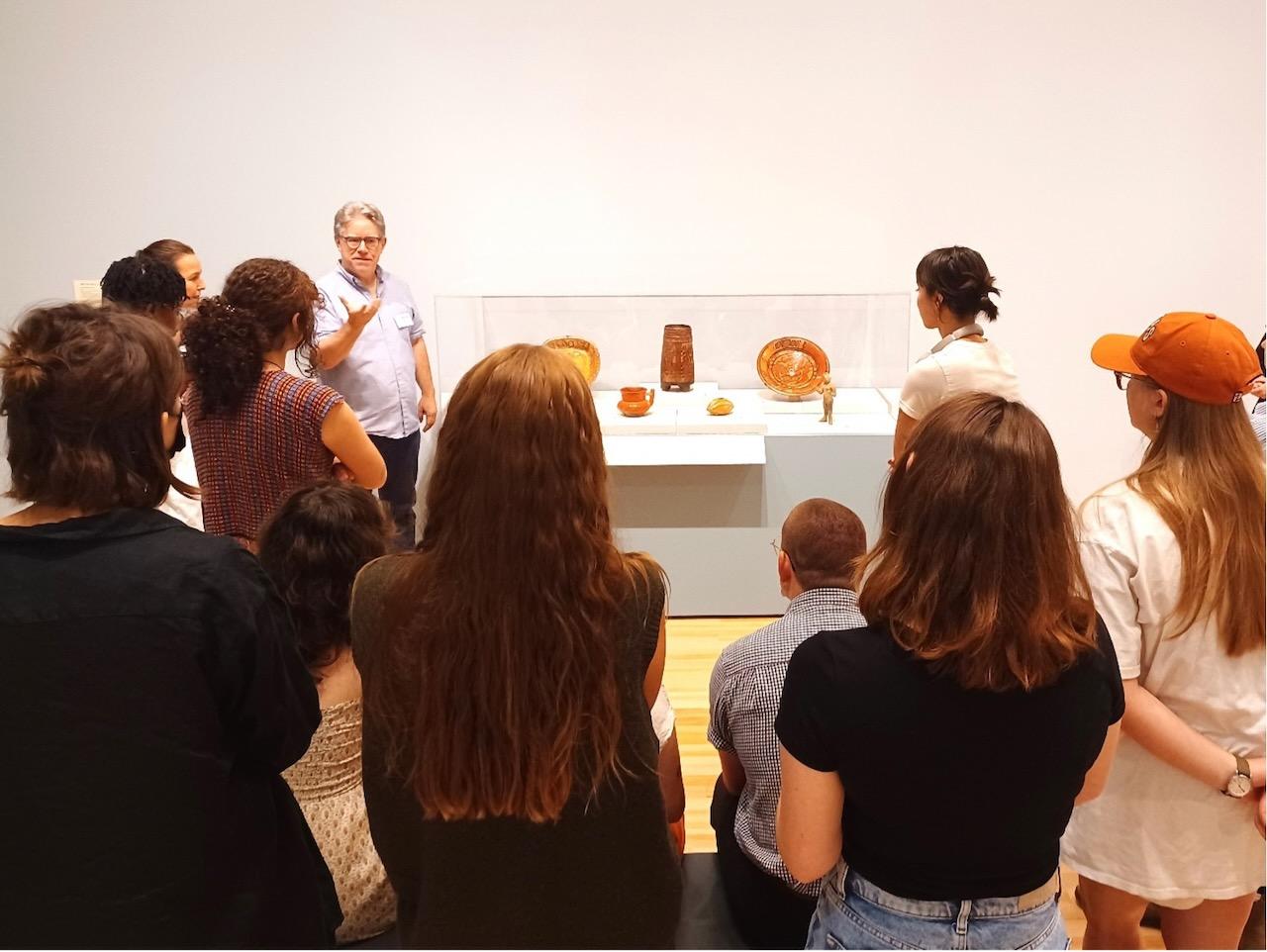
Photo credit: Michael Wolman
Astrid Runggaldier, associate professor of instruction in art history and assistant director of the Mesoamerica Center, ascribes UT’s ongoing success in the field to its collaborative, cross-disciplinary environment and deep bench of scholars from multiple departments. “Every time we go to the Society for American Archaeology annual meeting, I’m reminded how lucky we are [at UT] because a lot of my colleagues [at other schools] are in departments where they’re the only archaeologist or the only Mesoamericanist, and for them those meetings are really important,” Runggaldier said. “But we have that privilege all the time. We can reach out to people and see people here on a regular basis, and I think that that’s a really big strength. The older our field gets here, and the stronger it gets, it just has deeper and deeper roots.”
The geographical and political context of Texas adds another layer of significance to Mesoamerican studies at UT. For example, Stuart points out the complex reality of ancient Maya descendants living in the U.S. “Texas is in a very interesting place geographically, and also politically right now, in terms of people from that part of the world coming across the border or trying to come across the border,” he said. “There are contemporary Maya people here in the United States, and there are very complex and tragic reasons for that. But the more that we can connect our world and their world, the better off we are.”
A-maize-ing Grace
Stuart sees the study of Mesoamerican history as a crucial facet of global understanding, challenging the prevalent narrative that the Americas lacked a rich — or recorded — history before the arrival of Europeans. The arrival of “Forces of Nature” marks another step in the right direction, at least for Central Texas. “A lot of my research has inevitably revolved around some of the pieces in this collection from LACMA, so it’s amazing that it came to UT,” Stuart said. “The quality of the art objects is really extraordinary, with a lot of important information about Maya history and mythology.”
The exhibit also resonates with Runggaldier, who expressed her fascination with the Maya’s ability to visually and materially embody abstract concepts, such as the personification of the maize plant as a young lord. “You see images of what we would call landscape elements — plants, animals, or trees — that aren’t a depiction of landscape but are in fact a visualization of the idea of preciousness and the cycle of life,” she said. “Jade artifacts often represent the maize god, referencing this idea of something new, something fresh, something growing, something precious. And that’s not something that’s obvious unless you delve into Maya ideas of the world. Every culture has a way of expressing some of these ideas, and I just really like the way the Maya do it.”
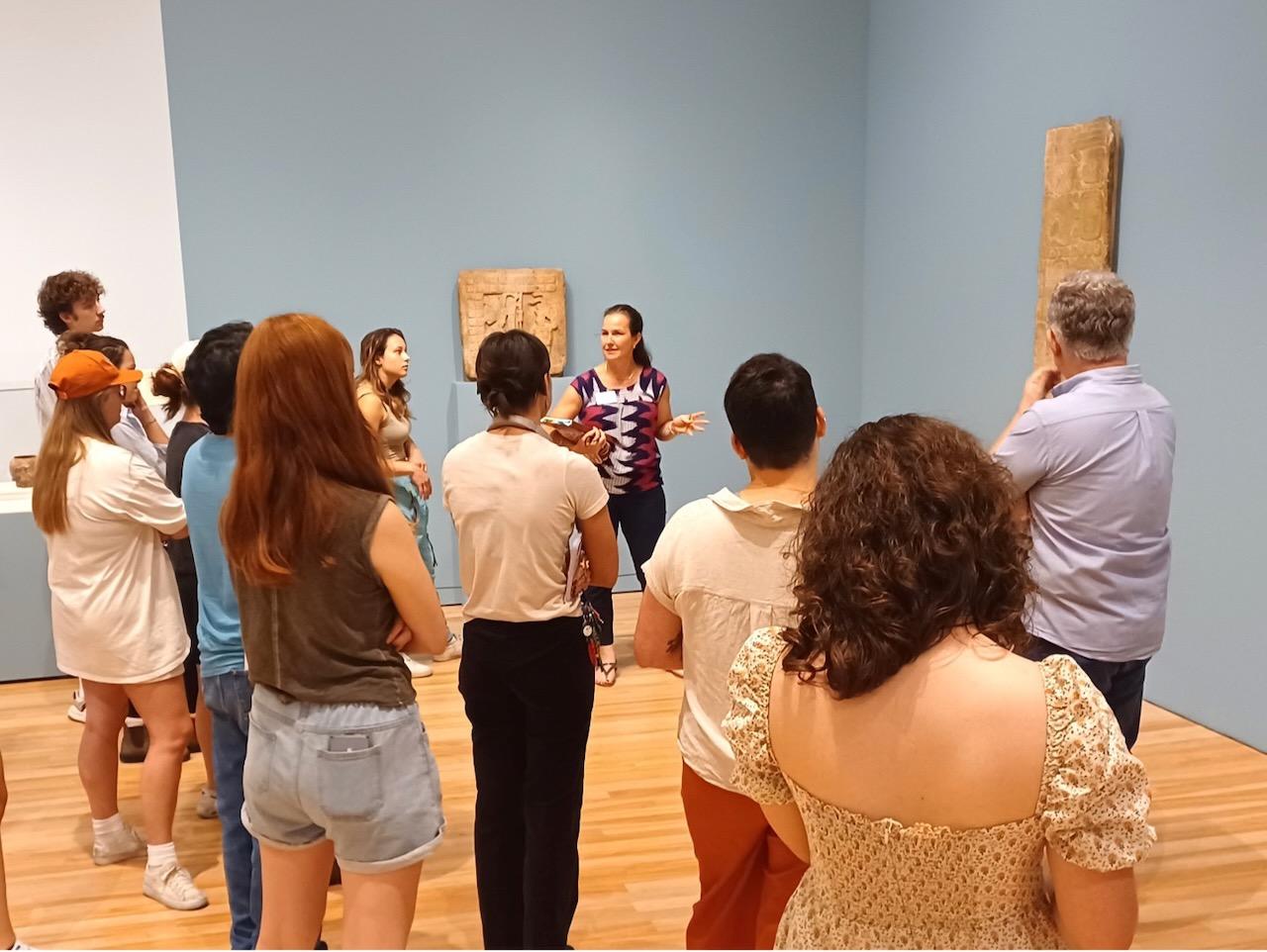
Runggaldier’s excitement about the exhibit extends beyond academics. Representations of animals are a particular favorite for her — for example, work that depicts monkeys as patrons of the arts or sea creatures linked to the underworld as the watery place of deities, ancestors, and deceased people. “To me, those all connect to some of these key Maya ideas,” she said. “But even for somebody who doesn’t know anything about the Maya, they’re still really engaging. Some of the representations are really naturalistic, sometimes almost comical and cartoony.”
On a tour of the exhibit with her undergraduate class, Runggaldier pointed out Early Classic vessel shaped like a crocodile, as well as “a great Armadillo pot” from the Late Classic period, which Granados foregrounded in the exhibition’s layout as a nod to Texas. “These are really fun for anybody to see, whether you’re a scholar, a Mayanist, or just a school kid on a field trip,” Runggaldier said. “I think those are going to be a big hit. It’s really exciting.”
